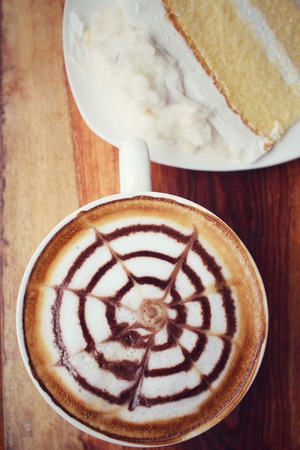Introduction: The Magic of Zero-Waste Baking
In kitchens across America, the zero-waste movement is changing the way we cook, bake, and savor our favorite foods. It’s more than just a trend—it’s a lifestyle that turns everyday leftovers into culinary gold. Imagine this: yesterday’s forgotten cup of coffee doesn’t end up down the drain, but instead becomes the heart and soul of a decadent coffee cake. That’s the magic of zero-waste baking—where sustainability meets creativity in your own home. By embracing inventive solutions like using leftover coffee as a flavor booster, you’re not just reducing food waste; you’re adding depth, warmth, and a rich aroma to classic desserts. Let’s dive into how that last sip from your morning brew can spark a new tradition of resourceful, flavorful baking right in your kitchen.
2. Why Use Leftover Coffee?
If you’re like most Americans, your morning cup of joe is a daily ritual—but what about that half-pot of coffee that sits forgotten on the counter? Before you pour it down the drain, consider this: leftover coffee is a secret weapon for bakers and eco-minded home cooks alike. Using day-old coffee in desserts, especially in a classic coffee cake, does more than just save waste; it adds deep, layered flavors that fresh coffee can’t match.
The Flavor Edge: Day-Old Coffee vs. Fresh
| Coffee Type | Flavor Profile in Desserts |
|---|---|
| Freshly Brewed Coffee | Bright, slightly acidic, light aroma |
| Day-Old Coffee | Richer, mellowed, hints of caramel and subtle bitterness |
When baked into a cake, day-old coffee imparts a gentle roasted note and enhances chocolate or spice flavors without overpowering sweetness—a taste upgrade that’s genuinely irresistible.
A Practical Step Toward Zero-Waste Living
Americans throw away millions of gallons of brewed coffee each year. Repurposing it for baking isn’t just smart—it’s part of a growing zero-waste movement that values resourcefulness and sustainability. By transforming leftovers into something delicious, you’re taking a small but meaningful step toward reducing food waste at home.
Why Every Eco-Conscious Baker Should Try This:
- Saves money: Get more out of what you already have.
- Cuts down waste: Every drop used is one less in the landfill.
- Adds depth to recipes: The nuanced flavor can’t be replicated with water or milk alone.
- Makes you part of the solution: Small changes add up across communities.
So next time you find yourself eyeing yesterday’s coffee pot with guilt, remember: it’s not trash—it’s your next dessert masterpiece waiting to happen.

3. What You’ll Need: Ingredients & Equipment
If your kitchen’s anything like mine, you’ve already got most of the essentials to whip up this crowd-pleasing coffee cake—no fancy shopping trip required. This recipe is all about making the most of what’s in your American home pantry and giving yesterday’s leftover coffee a delicious second act.
Pantry Staples: The Building Blocks
You’ll start with classic baking basics. Think all-purpose flour, granulated sugar, and brown sugar for that signature crumbly topping. Baking powder and a pinch of baking soda bring lift and tenderness—because nobody wants a dense cake, even if it’s zero-waste. Add in a bit of salt (Kosher or table salt both work) to balance out the sweetness.
The Stars of the Show
Leftover brewed coffee is the hero here—it brings depth, moisture, and that subtle roasted aroma we all love. For richness, grab some unsalted butter from your fridge (melted for easy mixing), plus a couple of large eggs for structure. A splash of vanilla extract rounds everything out with cozy bakery vibes.
Customize with What You Have
This cake loves flexibility. Got sour cream or Greek yogurt? Stir in a dollop for an extra tender crumb. No nuts? Skip ‘em or swap in chocolate chips for a kid-friendly twist. Cinnamon is a must for warmth, but nutmeg or cardamom can add an adventurous hint if you’re feeling bold.
Kitchen Tools: Simple & Streamlined
No need for stand mixers or specialty pans—just grab a couple of mixing bowls, a whisk or spoon, and your favorite 9×9-inch baking dish (a round cake pan works too). Parchment paper helps with easy removal, but it’s optional if you give your pan a good greasing.
This approach isn’t just about reducing waste—it’s about embracing comfort and creativity right at home. So peek into your pantry, rescue that cold pot of coffee, and let’s turn everyday staples into something irresistibly sweet.
4. Step-by-Step: Turning Coffee into Cake
Transforming leftover coffee into a dreamy, moist coffee cake is easier than you might think. This method not only gives your morning brew a second life but also brings a subtle, aromatic depth to a classic American treat. Let’s break down the process with straightforward steps and time-tested baking tips for that perfect crumb.
Gather Your Ingredients
| Ingredient | Amount | Notes |
|---|---|---|
| All-purpose flour | 2 cups | Sifted for best texture |
| Sugar | 1 cup | White or light brown for richer flavor |
| Baking powder | 2 tsp | |
| Baking soda | ½ tsp | |
| Salt | ¼ tsp | |
| Butter (softened) | ½ cup (1 stick) | Room temperature is key! |
| Eggs | 2 large | |
| Leftover brewed coffee (cooled) | ¾ cup | The star ingredient—make sure it’s cooled! |
| Sour cream or yogurt | ½ cup | Keeps cake extra moist and tender |
| Cinnamon (optional) | 1 tsp | Adds warmth and aroma—very American! |
| Nuts or streusel topping (optional) | Your choice | Pecan, walnut, or brown sugar crumble for a true coffee cake finish |
The Easy Process: Infusing Coffee into Cake Batter
Step 1: Creaming Butter & Sugar Together
This essential step creates air pockets, giving you that classic, fluffy crumb. Use a stand mixer or hand mixer on medium speed until the mixture turns pale and creamy.
Step 2: Add Eggs One at a Time
Add eggs in one by one, mixing well after each addition. This keeps your batter smooth and prevents curdling—a little patience goes a long way.
Step 3: Alternately Add Dry Ingredients and Wet Ingredients
Sift together flour, baking powder, baking soda, salt, and cinnamon. Mix your leftover coffee with sour cream or yogurt. Add dry ingredients to the butter mixture in thirds, alternating with the wet mixture. Start and end with flour—this helps maintain structure while keeping everything super moist.
Step 4: Fold in Optional Toppings
If you’re going for that all-American bakery vibe, fold in some chopped nuts or layer in a buttery brown sugar streusel for an irresistible crunch.
Baker’s Tips:
- Cooled Coffee Only: Make sure your coffee isn’t hot—it can scramble the eggs or melt the butter.
- No Overmixing: Stir until just combined once flour goes in; overmixing makes cakes tough.
- Bake at 350°F (175°C): Most American coffee cakes love this temperature—bake until golden and a toothpick comes out clean, about 35–40 minutes.
This simple process guarantees you’ll capture every drop of your leftover joe in a cake that’s as sustainable as it is scrumptious—perfect for sharing with neighbors or savoring alongside tomorrow’s fresh cup.
5. Top It Off: All-American Toppings and Twists
When it comes to finishing your leftover coffee cake, the toppings are where you can truly let your creativity shine—and dial up that classic American flavor profile. Go for a crumbly streusel topping, blending brown sugar, butter, and a sprinkle of cinnamon for a nostalgic crunch reminiscent of cozy Sunday mornings. If you want a southern touch, toss in some toasted pecans or walnuts; they not only add texture but also bring out a rich, earthy note that pairs beautifully with coffee-infused cake.
Pecan Streusel: The Southern Classic
Mix chopped pecans with oats, brown sugar, and a pinch of salt. Sprinkle generously before baking to create that irresistible golden crust. The nutty aroma wafting through your kitchen will have everyone circling the oven.
Cinnamon Swirl: A Timeless Favorite
For those who love diner-style classics, swirl in a mix of cinnamon and sugar right into the batter before baking. This creates beautiful ribbons of spicy sweetness throughout the cake—think of it as an homage to America’s favorite breakfast pastries.
Maple Glaze: Sweet Finishing Touch
Drizzle a simple glaze made from powdered sugar and real maple syrup over the cooled cake. This sticky-sweet finish gives your zero-waste dessert a Vermont-inspired twist that’s perfect for any brunch table or holiday gathering.
Bonus Mix-Ins
If you’re feeling adventurous, fold in mini chocolate chips, dried cranberries, or even a handful of coconut flakes for extra dimension and fun. These small additions make your coffee cake uniquely yours while keeping in step with American comfort food traditions.
With these topping ideas, your leftover coffee isn’t just rescued—it’s transformed into an all-American treat that’s sure to be the talk of the table.
6. Serving Suggestions: For Breakfast, Brunch, or Whenever
Coffee cake isn’t just a dessert—it’s an American staple that fits seamlessly into some of our most cherished rituals. Imagine this: it’s a lazy Sunday morning, the sunlight is streaming through your kitchen window, and the smell of fresh coffee and warm cake fills the air. That’s the magic of serving homemade coffee cake for breakfast or brunch. Whether you’re hosting a group of friends for a classic weekend brunch or sitting down with family for a cozy start to the day, this zero-waste treat—made from yesterday’s leftover brew—feels right at home on any table.
But don’t stop there. Coffee cake truly shines in its versatility. Slice it thick and serve with a dollop of whipped cream or a scoop of vanilla ice cream for a decadent dessert after dinner. Or, if you’re anything like us, you know that sometimes the best moments come late at night—a quiet house, a soft blanket, and a sneaky midnight snack. A piece of coffee cake with a glass of cold milk (or another cup of coffee) hits all the right notes when you need something sweet before bed.
In American culture, food brings people together and tells stories across generations. Coffee cake is one of those iconic comfort foods that works for every occasion, from potluck parties to holiday mornings. It’s easy to pack up for a picnic or bring along to share at work, instantly upgrading any gathering with its familiar cinnamon-laced aroma and crumbly top.
This simple yet irresistible cake bridges everyday routines and special celebrations alike. No matter how or when you serve it, turning leftover coffee into coffee cake gives new life to both your brew and your breakfast table—making every bite taste like home.
7. Sustainable Baking: Beyond Coffee Cake
Baking with leftover coffee is just the start of a delicious journey toward zero-waste living in your kitchen. In American cities from coast to coast, a growing number of home bakers are getting creative with what once might have ended up in the trash. Think about those overripe bananas, carrot peels, or even stale bread—each has the potential to become the base for a new treat. This approach isn’t just about saving money or reducing waste; it’s also about celebrating resourcefulness and honoring the full value of our food.
Rethinking Kitchen ‘Scraps’
The next time you’re tempted to toss out citrus zest, apple cores, or nut pulp from homemade milks, pause and imagine how these ingredients could add depth and flavor to your baking. Lemon zest brightens up muffins, while apple peels can be dried and sprinkled into granola bars. Even spent coffee grounds can find their way into chocolate desserts for an extra layer of richness.
Joining the Movement
This zero-waste ethos connects you to a broader food sustainability movement that’s gaining real traction across the U.S.—from urban farmer’s markets in Brooklyn to community composting projects in Seattle. Each small change at home ripples outward, helping reduce landfill waste and supporting a healthier planet. By treating every ingredient as precious, you’re not just baking—you’re making a statement about mindful consumption and environmental stewardship.
Your Next Steps
So let this coffee cake be more than a sweet ending—it’s an invitation. Challenge yourself to see every “leftover” as an opportunity. Experiment with new recipes, share your creations with friends and neighbors, and become part of America’s growing community of sustainable bakers. Together, one slice at a time, we can savor the flavors of our cities—and make them greener places to live.


